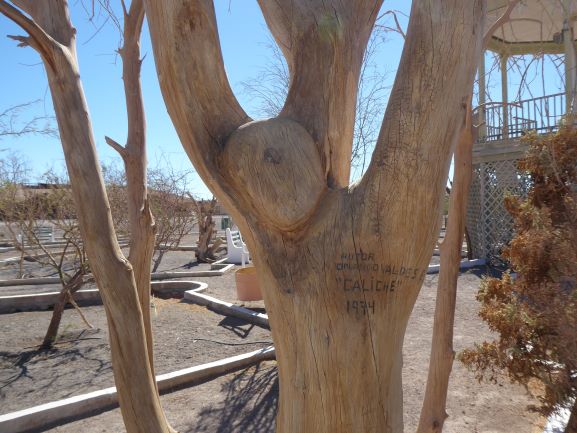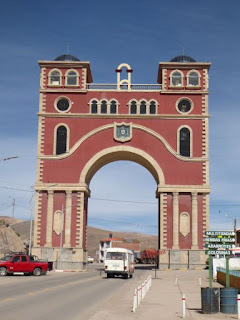The Paso de Jama is the northernmost border connecting Chile to Argentina, it is also the highest altitude (legal) border crossing on the globe. The towns closest to the border, San Pedro de Atacama in Chile and Susques in Argentina, are separated by 165 miles of wilderness. The only habitation between them is at the border station, 103 miles from San Pedro and 3 miles inside Argentina. Chile and Argentina operate an integrated facility which proved to be very efficient, once I reached it on my second attempt.
My goal was to reach the reasonable sized town of Jujuy, nearly 300 miles from San Pedro. The road is paved the entire way and Google estimates a five and a half hour transit. Add an hour for the border formalities, so a decent length day was in prospect.
Monday I suited up to head to Argentina. It had been a very windy night and dust was still blowing through San Pedro as I headed out under an overcast sky. The local volcano was not sharing all her secrets.
It was blowing a steady 30mph with gusts up to 40 and temperatures had dipped into the low 40'sF. Before heading up to the pass I plugged in my heated jacket and donned the heated gloves.
An hour into the journey temperatures had fallen below freezing, the wind intensified and the skies ahead looked ominous. At about the 50 mile mark, temperatures plummeted to 21ºF, sustained 50-60mph winds and a white out blizzard descended. Snow was accumulating on the road. A Connecticut Polar Bear Rider does not get fazed easily by winter conditions, but at 15,500ft + on a remote road under those conditions the decision to turn back was an obvious one.

An hour after I returned to San Pedro the authorities closed the border because of 'viento blanco', blizzards, and sustained gale force winds. While I was happy to be safely back at San Pedro, a mental gloom descended, I needed to get across the Andes to continue my journey. There are not many options to get into Argentina and those to the south for 1,000 miles were closed due to the same winter conditions. I didn't know if 24 hours would make a difference, but that was the most rational choice.
Tuesday morning was a completely different day, calm under a full blue sky. The border normally opens at 8am, by 9am the government website still had a red light and boldly asserted 'CERRADO'. Finally at 9.05 it went green, 'ABIERTO'. I have never moved so quickly to pack up the bike.
The riding day could not have been better, temperatures stayed above freezing, the sky stayed blue. The wind was up at times but not the fierce blow of the day before. A little snow remained on the road in places, but most had been freeze dried under the action of dry air, low overnight temperatures and the incessant wind.
The scenery up at altitude was unworldly, the frustration and gloom of the day before vanished, like the snow.
The views 1 minute into the video are on the Argentine side of the border.
The Salar Grande in Argentina is not on the scale of the Salar de Uyuni but it is huge in its own right, and the color of the rock formations once descended from the high plains were staggering.
The road down from the high plains was like a tormented piece of spaghetti, numerous switchbacks, steep descents and miles of it. A delightful way to bid the Andes farewell after weeks of incomparable motorcycling and tourism fun. The day peaked at 15,705ft, I will not see those altitudes again on this journey.
Jujuy was home for the night and then a short 60 mile ride to Salta today. Mist, a little rain and a road that twisted through verdant mountain forests reminded me of the Blue Ridge Parkway in Virginia. It was a pleasant change of pace.
Salta is a town of contrasts, like many I suppose, some spiffy areas and others that perhaps illustrate the economic challenges that Argentina again faces. The spiffy pics.
Thursday the journey east commences in earnest, towards Corrientes. The nature of this trip is about to change, mountains are in the rear view mirror as I am heading for the Chaco region, a flat land, that is penetrated by a long straight road. Cattle country I believe.
I will catch up on the other side in a couple of days.
Cheers. T2




























































